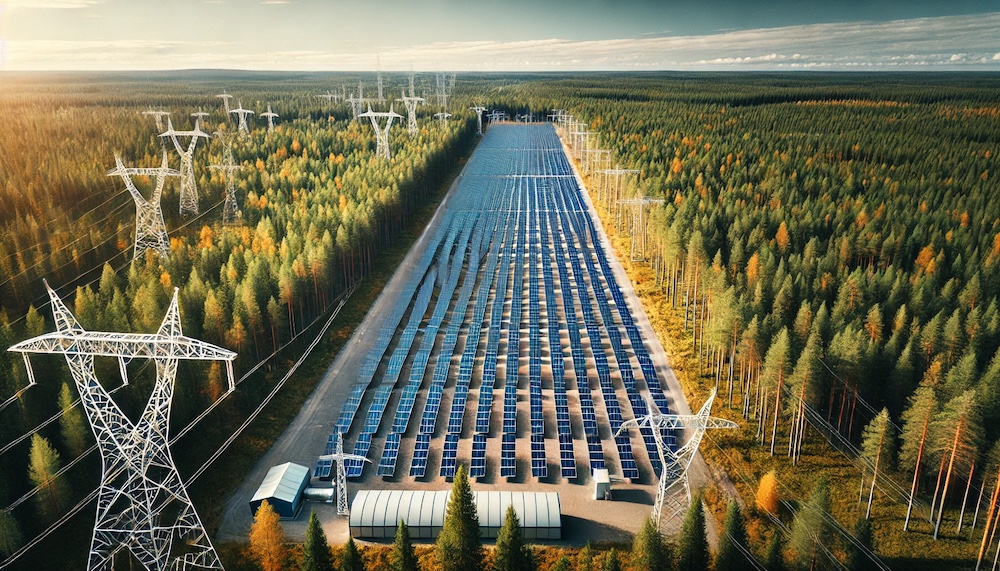Finland is experiencing a boom in the planning and construction of large-scale industrial solar power farms. From a broader perspective, solar panels should primarily be installed on rooftops, unused land, and vacant industrial areas. Most importantly, solar farms must not destroy biodiversity or valuable natural areas.
However, forest owners are increasingly interested in building large solar farms in commercial forests, especially near power lines. Installing solar panels in forests reduces the forested area and the land’s natural carbon sequestration capacity. However, it is crucial to keep in mind that solar panels’ ability to reduce emissions is vastly superior—easily more than 300 times greater—compared to the carbon sequestration capacity of an average Finnish commercial forest.
Comparing Carbon Sequestration and Emission Reduction
The average annual energy production of monocrystalline silicon (c-Si) single-sided solar panels in southern Finland is approximately 900 Wh/Wp (Motiva 2024). If this same electricity were produced using coal-fired condensing power plants (with an emission intensity of approximately 0.9 g CO₂/Wh, according to IEA 2024), the emissions would amount to:
900 Wh × 0.9 g CO₂/Wh = 810 g CO₂ per Wp annually
According to Stora Enso (2024), one hectare of Finnish forest sequesters an average of 4,700 kg of CO₂ per year, which equals:
470 g CO₂ per square meter annually
Considering that one watt-peak (Wp) of solar power capacity typically requires around 0.005 square meters of land (Motiva 2024), we can compare the figures:
A growing forest sequesters 470 g CO₂ per m² per year
Solar panels on the same area would offset 162,000 g CO₂ per year by replacing coal-generated electricity
Thus, the difference is over 300 times in favor of solar panels in terms of climate change mitigation.
Under What Conditions Could Solar Farms Be Built in Commercial Forests?
If a commercial forest does not contain significant or protected biodiversity values, and if solar farms do not significantly harm recreational use (especially near urban areas), I see no major issue with constructing solar farms in commercial forests. From a cost perspective, solar farms will naturally be concentrated near power lines, and they will only occupy a small fraction of Finland’s total commercial forest area.
However, I would like to make one request to forest owners and propose a policy goal for Parliament: developers of solar farms should, in the spirit of ecological compensation, protect an equivalent area of ecologically valuable forest elsewhere.
This article was also published on the TalousVihreät blog on December 4, 2024: 📌 https://talousvihreat.fi/2024/12/04/talousmetsiin-tulee-voida-rakentaa-aurinkopuistoja/ (in Finnish)
Sources:
IEA 2024: Average CO₂ intensity of power generation from coal power plants, 2000–2020, https://www.iea.org/data-and-statistics/charts/average-co2-intensity-of-power-generation-from-coal-power-plants-2000-2020
Stora Enso 2024: “A well-managed forest is a climate action”, https://www.storaensometsa.fi/hyvin-hoidettu-metsa-on-ilmastoteko/
Motiva 2024: Solar power system capacity, https://www.motiva.fi/ratkaisut/uusiutuva_energia/aurinkosahko/jarjestelman_valinta/aurinkosahkojarjestelman_teho
Featured Image
The cover image was generated by ChatGPT using the prompt:
“Create an image of a large solar power farm in the middle of a Finnish pine forest near a power line.”


